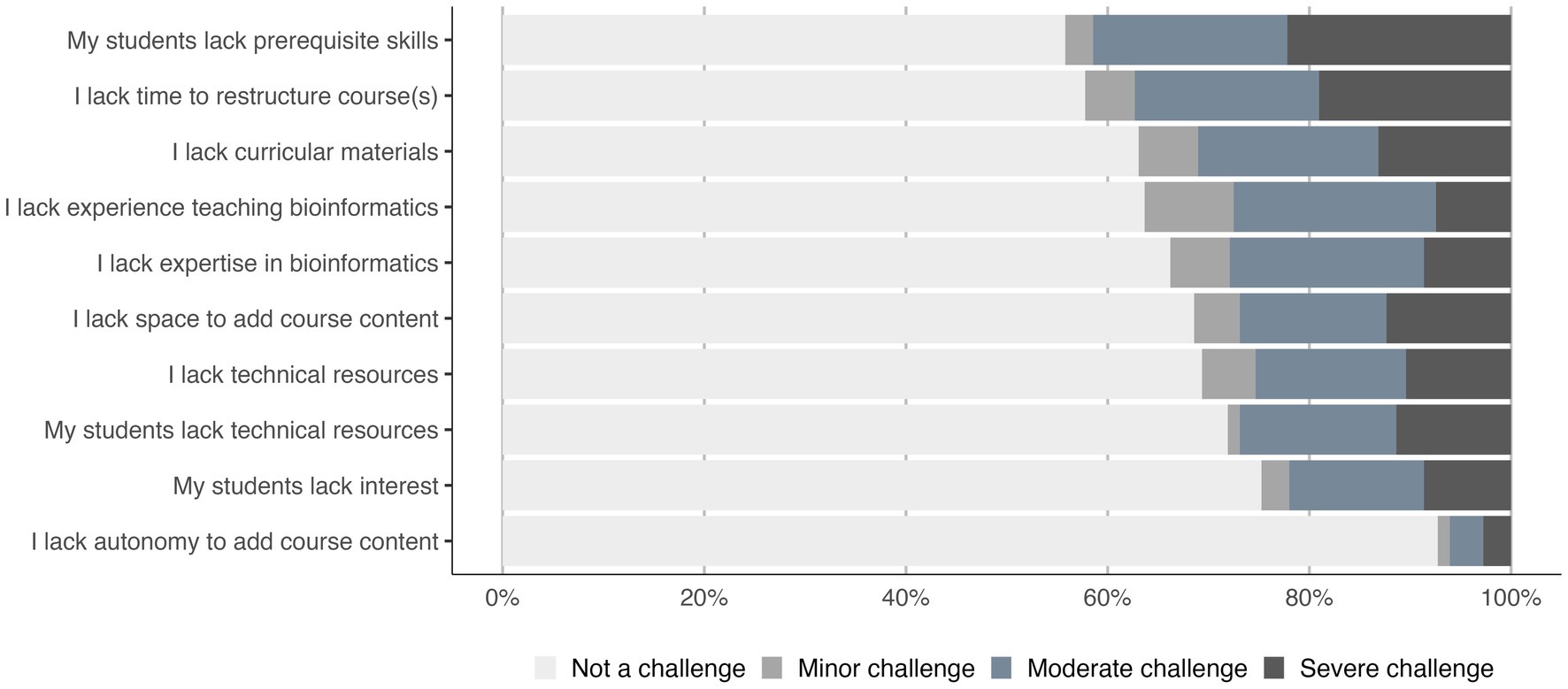Bioinformatics Tutor Can Be Fun For Everyone
Table of ContentsAll About Bioinformatics TutorSome Of Bioinformatics TutorFascination About Bioinformatics TutorNot known Facts About Bioinformatics TutorThe Main Principles Of Bioinformatics Tutor
Of the total amount individuals included in the training, 80% were students from public college institutions, while the remaining 20% came from exclusive establishments. To certify for a certificate of involvement, trainees were required to attend at least 90% of the overall training hours. As a result of this need, a remarkable 95% of the individuals effectively obtained their certifications, having not only met the minimum presence requirements but additionally finished all assigned tasks throughout the training.
Throughout the height of the COVID-19 pandemic, specifically in between June and August 2020, the job group was charged with organizing specialized training in bioinformatics. This training was specifically aimed at students from the research team Center for Research study in Applied Computing at the Federal College of Pará (UFRA) The adaptation to remote learning systems because of the pandemic created a possibility to check out new teaching methods and digital devices that enhanced both reach and efficiency.
This program was designed to offer an accessible yet comprehensive summary of Artificial Intelligence techniques, specifically as used in bioinformatics (Bioinformatics Tutor). This digital format made it possible for participation from pupils across Brazil, numerous of whom might not have had the possibility to attend in-person sessions.
Unknown Facts About Bioinformatics Tutor
Roughly 50% of the overall training hours were dedicated to functional tasks where students built intelligent versions and applications in a range of scientific domain names, including genetics, molecular biology, and environmental data evaluation. These platforms made it possible for trainees to engage in real-time information manipulation, model training, and algorithm experimentation.
The training course attracted 80 participants in total amount. Sixty of them were connected with numerous college establishments in the state of Pará, while the staying twenty came from establishments found in five other Brazilian states. This broad geographical representation highlighted the nationwide interest in bioinformatics and the expanding need for specialized abilities around. By presenting Expert system in a sensible and pertinent context, the campaign served to bridge the void in between theory and real-world application, providing pupils with a strong foundation for future research or work in the field.
The training initiative created part of a broader scholastic outreach effort known as the Bioinformatics when traveling project. This task has, throughout the years, introduced loads of trainees to the globe of bioinformatics and computational biology. The events held under this umbrella campaign have occurred across numerous regions and years, as summed up in Table 1 (Checklist of events, areas, years, and overall varieties of students and trainers)
Among the most remarkable results of the Bioinformatics when driving initiative has actually been its payment to the growth of decentralized research study teams. Numerous of these groups, at first brought with each other by their participation in training events, have actually since taken place to generate independent clinical research in partnership with neighborhood scholastic institutions. The training not only promoted clinical reasoning within the context of bioinformatics but likewise triggered collaborative relationships that prolonged beyond the training atmosphere. These cooperations have led to enhanced regional clinical performance and added meaningfully to the development of the broader bioinformatics community in Brazil.
Some Known Facts About Bioinformatics Tutor.
The exact same team, omitting IH and RR, additionally acted as tutors for the useful training components. Funding for the job was provided with the give 88887.200562/ 2018-00 from CAPES.
The Federal University of Pará's Workplace of Study (PROPESP/UFPA) likewise gave financial backing, especially for the production of the last manuscript. The writers declare no financial or business conflicts of rate of interest that can have influenced the research study. All viewpoints and analyses revealed in this post are only those of the authors and do not necessarily show those of their respective organizations, the publisher, editors, or reviewers entailed in the magazine procedure.

Bioinformatics Tutor Fundamentals Explained
From a pedagogical point of view, the mentor technique utilized in the training was deliberately interactive. Courses were performed in a fashion that urged trainee involvement and discussion, going past memorizing memorization to check out exactly how ideas are developed, used in day-to-day live, and evaluated in wikipedia reference academic setups. The educational approach concentrated on supporting both strong and struggling students, giving personalized support, and building self-confidence via sustained mentorship and patience.

Each team, containing around 36 participants, was sustained by 3 mentors-- most of whom were postdoctoral researchers with customized know-how. These advisors not just assisted design the team tasks however likewise facilitated their implementation, making sure that each research study question was both suitably difficult and relevant. The objective was to supply a biologically realistic context that individuals might explore via flexible goals and access to curated datasets.
For added insights right into the approach and results of this project-based knowing approach, visitors are directed to S1 Text, which consists of comprehensive summaries of the instructional framework, examination techniques, and task themes used in the training sessions.
Bioinformatics Tutor for Beginners
Of the total amount individuals included in the training, 80% were students from public higher education and learning institutions, while the continuing to be 20% came from exclusive institutions. To certify for a certificate of involvement, pupils were called for to go to at least 90% of the overall training hours. Especially, beyond the students who signed up in the training sessions, 7 knowledgeable teachers participated in delivering the programs, while three specialized research professors collaborated the general training procedure. Around 50% of the complete training official site hours were dedicated to functional tasks where pupils constructed smart versions and applications in an array of clinical domain names, consisting of genes, molecular biology, and ecological information analysis. The training not just cultivated clinical reasoning within the context of bioinformatics yet additionally triggered collaborative relationships that extended past the training setting.